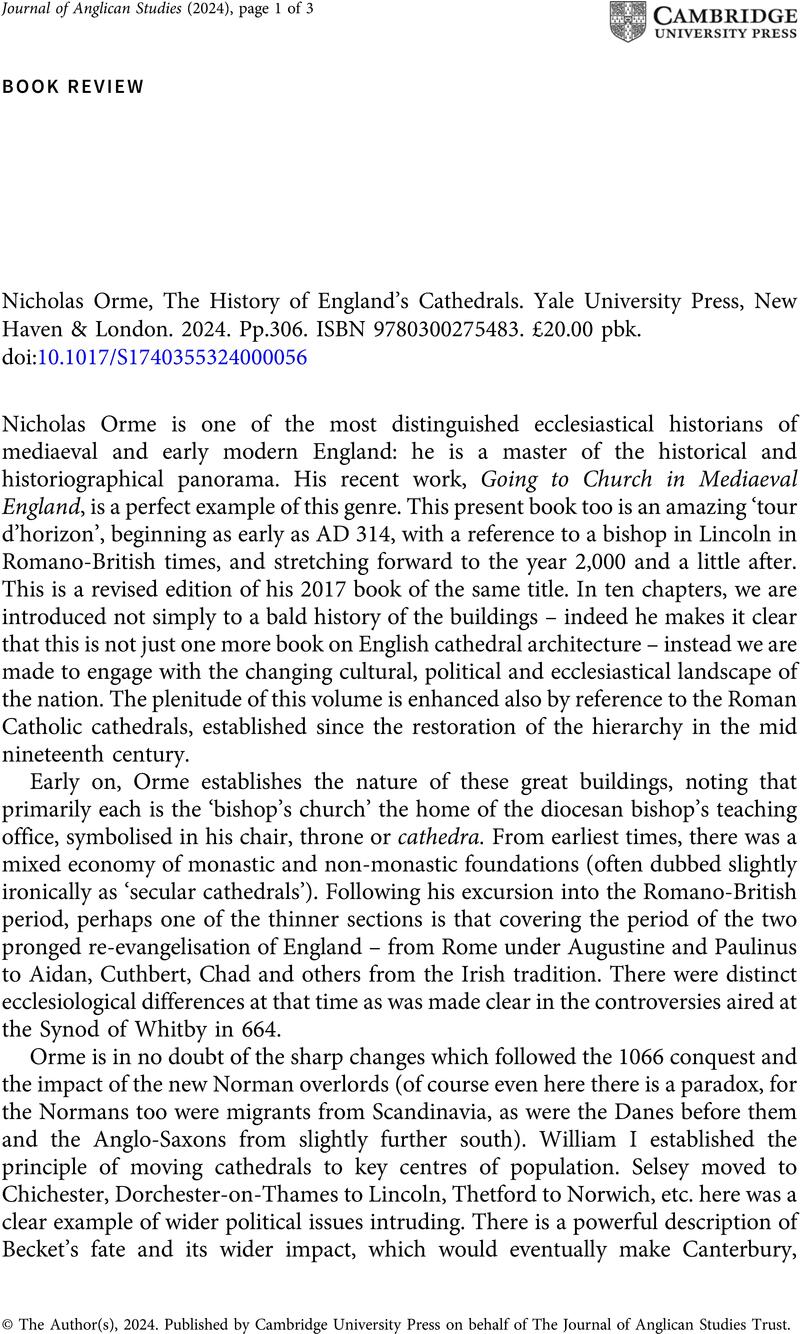No CrossRef data available.
Article contents
Nicholas Orme, The History of England’s Cathedrals. Yale University Press, New Haven & London. 2024. Pp.306. ISBN 9780300275483. £20.00 pbk.
Review products
Nicholas Orme, The History of England’s Cathedrals. Yale University Press, New Haven & London. 2024. Pp.306. ISBN 9780300275483. £20.00 pbk.
Published online by Cambridge University Press: 26 February 2024
Abstract
An abstract is not available for this content so a preview has been provided. Please use the Get access link above for information on how to access this content.

- Type
- Book Review
- Information
- Copyright
- © The Author(s), 2024. Published by Cambridge University Press on behalf of The Journal of Anglican Studies Trust



